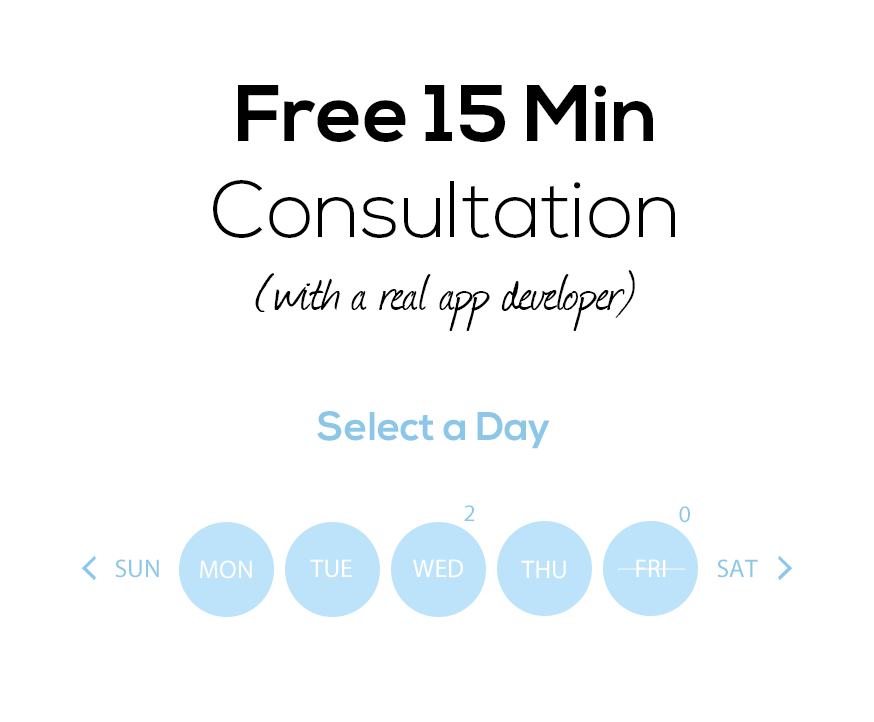Updated
Dec 22
2020
A Guide to Brand Messaging – How to Find Your Voice
Just do it.
Eat fresh.
Have it your way.
Recognize any of these brand taglines? Of course you do!
These are famous and unanimously known examples of successful brand messaging in the form of catchy slogans.
Look at each one carefully and you’ll see that they have an underlying message that resonates with the brand’s audience and speaks to the company’s values.
“Have it your way”, for example, is a 40-year-old slogan from Burger King that says a lot.
It says:
- Live how you want
- It’s ok to not be perfect
- Customize your burger
Brand messaging isn’t just about catchy slogans, though. It’s about all of the language used in your content.
This language needs to inspire, persuade, motivate, and ultimately, guide your users to download your app, make in-app purchases or take some other positive action in your app.
In short, brands need a voice.
And brand messaging is all about utilizing the right words to communicate with your app’s target audience.
Let’s take a look at how you can craft the perfect brand messaging for your mobile app business and how it can bring your app success.

A lot of people think that brand messaging is only about potential customers and the users of your app, but brand messaging actually starts within your company.
Your company’s brand messaging and voice starts with you and your team.
This has everything to do with company culture, your company’s values, and vision.
Creating the right messaging will affect the people you work with just as much as it will affect your users.
When you’re getting ready to develop your brand messaging, you’ll also want to spend time identifying your company’s core values and mission.
This is crucial to the rest of your messaging.
This is what most people think about when they talk about brand messaging.
It’s the language you use as a company to communicate with your users and audience.
While internal brand messaging is more about establishing messaging that revolves around ideas, external brand messaging is more about being informative and actionable.
Let’s run through some of the primary elements that go into creating a company’s brand messaging.
Your mission statement should sum up the “why” aspect of your app in just a sentence or two.
It’s short and sweet.
It aims to underline why your app exists and why you believe in it. It should capture the heart of your mobile app endeavor.
As of 2020, Uber’s mission statement, to give you an example is:
“We ignite opportunity by setting the world in motion.”
As you can see, their mission statement is short and to the point. It expresses their purpose in less than 10 words.
“We ignite opportunity” — This is an opportunity that ecompasses everyone. It’s an opportunity to be self-employed as a driver and it’s an opportunity to partake in their ridesharing service.
“Setting the world in motion” — Uber is committed to a transportation system that has completely disrupted the industry.
It’s made transportation more accessible, more effective, and even more fuel-efficient.
It also has a global impact, which you can feel from this evocative mission statement.
Create a mission statement for your brand that says a lot in a few powerful words.
Remember, this has to do with the why. The who, what, and how come later.

While your mission statement is grounded in the now, a vision statement is more about the future.
It’s a forward-thinking statement that considers the company’s goals, and well, vision.
Where is your company going?
What does the future look like for your mobile app business?
Brainstorm and think about where you envision your app in the future.
What are your values as a mobile app company?
Here is an example of Uber’s cultural values:
Value #1: We build globally, we live locally.
This value is about building powerful and scalable services while staying connected to the communities, drivers, and riders they serve.
Value #2: We are customer obsessed.
This value is about Uber’s commitment to their customers and establishing trust and loyalty by solving problems, maximizing drivers’ earnings and lowering costs for riders.
Value #3: We celebrate differences
This value is about Uber’s commitment to diversity and inclusion. They encourage individuals from different backgrounds to participate in their services.
Value #4: We do the right thing.
This value is about Uber’s promise to do the right thing as a company for both their employees and their customers.
There are many more values for this goliath of a company, but you get the point.
These values are an important ingredient to the success of Uber.
Without caring about the community, their employees and customers, without applying a user-centric approach, without caring about diversity, without doing the right thing — what would Uber be without all of this?
While a company’s mission statement is all about the “why”, a positioning statement focuses on the who, what, and how.
It’s a short, to-the-point description of your target market and paints a clear picture of how you want that market to view your brand.
All of the marketing decisions you make for your brand should be closely aligned to your positioning statement and it should support it.
Here are a few key pointers to making a solid positioning statement:
- Short, simple, and crafted for your target market
- Provides a crystal clear picture of your brand that should also differentiate it from the competition
- It’s a trustworthy and credible statement that your brand can deliver on
- It’s a good guideline for steering marketing decisions in the right direction
- It allows room for growth
Here is Apple’s positioning statement so you can see how they integrate all of the above points:
“For individuals who want the best personal computer or mobile device, Apple leads the technology industry with the most innovative products.
Apple emphasizes technological research and advancement and takes an innovative approach to business best practices – it considers the impact our products and processes have on its customers and the planet.”
It pretty much fits this positioning statement template:
For (TARGET USER) who (NEEDS) our app is (PRODUCT CATEGORY) that (MAIN BENEFITS).
And that’s all there is to it!
To create truly effective brand messaging, it’s not just the words you say but how you say them.
Your company has a voice. It can be playful, casual, silly, professional, or whatever most suits your mobile app brand.
Whatever your voice is, be consistent and maintain that voice in all of your marketing and communications with your app’s users.
It will help them connect to your brand and identify it more easily when you start sending push notifications and other forms of messaging.
Whether or not you’re gearing up to present your app idea to investors, it’s always a great idea to put together an elevator pitch for your mobile app.
All of the points we’ve discussed so far—mission statement, values, voice, and so on—this will all help you when it comes time to creating a knock-out elevator pitch for your app.
So what’s an elevator pitch?
Imagine you’re in an elevator with a wealthy investor. You have 30 seconds to sell your app idea to them.
Go!
An elevator pitch describes what your app is and what problems it solves in a short, concise way.
Having a solid understanding of your brand’s messaging will help you get started.

If you want to craft the perfect brand messaging that resonates with your users, there are plenty of activities and exercises that can help get you brainstorming.
Let’s take a look at a few.
3.1 Draw Your Users
Ok, you don’t actually have to draw your user (unless you want to), but what I mean is to theoretically paint a picture of what your user looks like.
Think about:
What kind of clothes do they wear?
What occupation do they have?
Are your users silly or more professional?
What kind of language would your users use?
This exercise will personify your target audience which will help you hone in on your ideal brand messaging.
3.2 We are | We are Not
Just as it’s important to know what you are, it’s also important to know what you are not.
Make two lists, one that describes what your brand is and the other that describes what your brand is not.
Feel free to be as elaborate as you’d like.
For example, a healthcare mobile app may have a list that looks like this:
We are:
- Professional
- Affordable
- Compassionate
- Forward-thinking
We are not:
- Gritty
- Edgy
- Highfalutin
- Expensive
PRO TIP
Try to refrain from using hard opposites in your list (which usually involves adding or removing a prefix like in-, dis-, mis-, anti-, un-, etc).
Create a personality spectrum (or you can find one online) and place your brand on that spectrum.
So on one end of the spectrum, you might have words like “Modern or high tech” and on the other end of the spectrum, you have “Classic and traditional”.
Or you might have “Fun” on one end, and “Serious” on the other end.
Where does your company fall on the personality spectrum?
Touchpoints are the points of contact between you and your user.
If you take a look at a bank, for example, they have many touchpoints.
They have ATMs, branch visits, an online website, and a mobile app.
Each of these touchpoints are opportunities to interact with their customers and leave a positive impression on them with each experience.
For your mobile app, touchpoints may come in the form of your mobile app, the App Store, push notifications, newsletters, social media, advertisements, and so on.
In each of these instances, your users are coming in contact with your brand messaging, so each needs to be carefully considered to ensure they’re “on-brand”.
Let’s take a quick look at a few of these common touchpoints.
4.1 App Store
This is probably going to be the first touchpoint your users encounter, so your brand messaging here will lay the foundation and expectation for everything that comes next.

Not only does your language need to be on-brand, but it also needs to be actionable.
You want your App Store visitors to download your app.
4.2 Mobile App
Your mobile app is the biggest touchpoint. Whatever your service or industry is, keep the content within your app concise.
No one wants to read long paragraphs in a mobile app. Users just want to do what they came to do, whether it’s to order food, get a driver to come pick them up, or whatever your service is.
So keep the language short and light.
Make use of visuals and design elements that can supplement your messaging.
4.3 Push notifications
Push notifications are one of the most popular touchpoints for mobile apps.
It helps bring users back to the app.
PRO TIP


Just because it has the word “push” in it doesn’t mean you want to be pushy! There’s nothing worse than being bombarded with annoying push notifications from the same app.
Language here is important and if not done correctly, you can rub your users the wrong way.
Keep your push notifications short and sweet and to the point while also maintaining your brand’s voice.
4.4 Newsletter
Newsletters are great opportunities for brands to get in a little more messaging to their users.
Unlike push notifications, newsletters offer a bit more leeway to include more content to your readers.
Just make sure the content is always relevant, useful, and of course, has a voice that’s consistent with your brand.
Final Thoughts
Brand messaging is something that takes careful consideration. After all, you’re setting the voice and tone of your entire company, which will cascade down to every communication touchpoint you have with your users.
Be true to yourself and your team.
Don’t pretend to be something you’re not. Craft a brand messaging that will help people see your value as a mobile app and one that will resonate with your users.

Your inbox wants some love.

Stay informed with Webiotic latest
Stay informed with Webiotic latest


